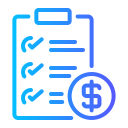Strategic Budgeting Techniques for Personal Finance: Build a Plan That Actually Sticks
Chosen theme: Strategic Budgeting Techniques for Personal Finance. Step into a practical, story-driven guide to aligning money with your values, building resilient cash flow habits, and mastering review rhythms that last. Join the conversation, share your goals, and subscribe for weekly budgeting challenges and templates.
Start With Purpose: Define Your Money Mission
List your top five values, then map each to tangible categories – education, health, freedom, creativity – so every dollar you budget advances something meaningful, not just an abstract spreadsheet target.


Zero-Based Budgeting, Made Flexible
Use a three-step allocation: income to essentials, goals, and lifestyle. Every dollar gets a job, but categories flex monthly based on actual rhythms, avoiding rigid perfectionism that triggers budget burnout.
Zero-Based Budgeting, Made Flexible
Build sinking funds for big, irregular bills – insurance, car maintenance, holidays. Contribute small amounts every paycheck so surprises become scheduled events, not crises that destroy momentum and force high-interest debt.



Automation That Prevents Decision Fatigue
01
Pay-Yourself-First Pipeline
Set a paycheck pipeline: income arrives, then auto-routes to savings, investing, essentials, and discretionary. Leftovers become planned fun, not random splurges. Fewer decisions mean fewer slipups and better compounding habits.
02
Calendarized Money Rituals
Anchor money rituals to existing routines: Friday lunch equals five-minute review, first Sunday equals monthly reset. Calendar pings prompt action before problems grow. Share your ritual so others can borrow and adapt.
03
Fail-Safes for Derailed Weeks
When life derails plans, build fail-safes: a small buffer account, an automatic minimum debt payment, and pre-scheduled grocery lists. These reduce chaos, protect essentials, and keep your strategy alive under stress.
Habit Loops: Cue, Routine, Reward
Design habit loops intentionally. Cue: calendar reminder. Routine: five-minute category check. Reward: update a progress bar toward a joyful goal. Small, satisfying wins reinforce consistency far better than occasional heroic efforts.
Precommitment and Temptation Bundling
Precommit with hurdles. Freeze your credit card in ice, or schedule transfers before temptations hit. Pair chores with pleasures, like budgeting while brewing coffee, to make the routine inviting and sticky.
Social Accountability and Micro-Stakes
Use social accountability. Share a monthly goal in our comments, text a buddy your weekly check-in, or commit a tiny donation to charity if you miss. Community pressure can be constructive and compassionate.
Risk Management Within Your Budget
Tiered Emergency Funds
Build emergency fund tiers: first five hundred for nuisances, then one month for stability, then three to six for resilience. Label each tier’s purpose so you resist raiding it for shiny, nonessential wants.
Align Deductibles With Cash Cushions
Match insurance deductibles with cash buffers. If your deductible is high, keep that amount liquid. This alignment prevents emergencies from becoming debt spirals and keeps your strategic budget steady under pressure.
Scenario Planning and Stress Tests
Stress test your budget quarterly. Simulate a twelve percent income drop, a medical bill, or a rent increase. Adjust categories and buffers, then share your insights so our community learns stronger planning together.


Budgeting for Irregular Incomes
Build a baseline budget using your lowest recent month. Live on that, treat anything extra as seasonal gravy, and route surplus toward goals. Stability first; acceleration second. Share your baseline number below.
Review, Iterate, and Celebrate
Hold weekly check-ins capped at fifteen minutes. Look for three things: overspends, underspends, and opportunities. Move money intentionally and write one short reflection. Consistency matters more than long, exhausting sessions.
Review, Iterate, and Celebrate
Run a monthly retrospective. Compare plan versus reality, note emotional triggers, and adjust categories. Share a chart or takeaway in the comments, inspiring others to iterate rather than quit when friction appears.
Review, Iterate, and Celebrate
Celebrate frugally but meaningfully. Light a candle at dinner, print a progress snapshot, or plan a free park day. Recognition cements identity: you are someone who stewards money strategically with courage.
